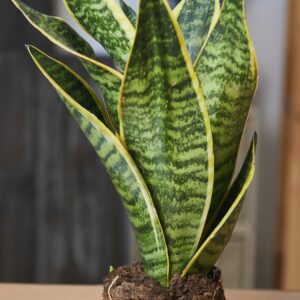The night sky has always been a source of fascination for people throughout the ages.
From twinkling stars to full moons, the sky never ceases to amaze us. One of the most intriguing celestial events is the Pink Moon. Despite its name, the Pink Moon is not actually pink.
In this article, we will explore what the Pink Moon is, why is it pink, why it is also called “Pink Moon”; its significance, and how you can view it.
What is the Pink Moon?
The Pink Moon is the full moon that occurs in April each year. It is named after the pink flowers, known as wild ground phlox, which bloom in early spring. The Pink Moon also goes by other names, including the Egg Moon, Sprouting Grass Moon, and Fish Moon.
Scientifically, the Pink Moon is no different from any other full moon. It is simply the point in the lunar cycle where the moon is at its brightest and most visible. However, it is worth noting that the Pink Moon is not always perfectly round, as the moon’s orbit can sometimes cause it to appear slightly elongated or distorted.
The Pink Moon typically occurs in mid to late April, although the exact date and time can vary each year. In 2023, the Pink Moon will occur on April 16th at 11:56 AM Eastern Time.
What causes the moon to be pink
The truth is that the Pink Moon does not get its name from its actual color, but from the pink flowers called wild ground phlox that bloom around the same time as the full moon in April.
So, what causes the moon to have its usual bright white or yellowish hue? The answer lies in the way sunlight interacts with the moon’s surface.
The moon has no light of its own and instead reflects the sunlight that falls on it. The sun’s light is made up of all the colors of the rainbow, which we can see when light is refracted through a prism. However, when sunlight reaches the moon, the moon’s surface reflects the light back to us in a way that makes it appear mostly white or yellowish.
The moon’s surface is covered with a layer of fine dust and rocky material called regolith, which is made up of various minerals. When the sun’s light hits the moon, it reflects off the regolith and bounces back towards the Earth. The amount of light reflected depends on the angle at which the light hits the surface, the composition of the regolith, and the texture of the moon’s surface.
During a lunar eclipse, the Earth passes between the sun and the moon, casting a shadow on the moon’s surface. As the moon passes through the Earth’s shadow, the sunlight that is normally reflected off the moon is blocked, causing the moon to appear reddish or orange in color. This is sometimes called a Blood Moon and is a rare and beautiful sight to behold.
In summary, the Pink Moon is not actually pink, but gets its name from the pink flowers that bloom around the same time as the full moon in April. The moon appears white or yellowish because it reflects sunlight that falls on it, and the amount of light reflected depends on the angle, composition, and texture of the moon’s surface. During a lunar eclipse, the moon can appear reddish or orange in color due to the way sunlight is refracted through the Earth’s atmosphere.
Why is it called a Pink Moon?
The Pink Moon gets its name from the pink flowers called wild ground phlox, which bloom in early spring around the same time as the full moon. These delicate pink flowers cover the ground with a beautiful pinkish hue, which inspired the name for the full moon.
The tradition of naming moons after natural events is not a new one. Native American tribes used the lunar cycles to mark the changing seasons and gave each full moon a distinct name based on the natural events that occurred during that time of year. The names given to the full moons were often inspired by the local flora and fauna and the changes in the weather patterns.
The Pink Moon is also known by other names such as the Egg Moon, the Sprouting Grass Moon, and the Fish Moon, depending on the cultural and regional traditions. However, the Pink Moon name has become the most widely recognized and is often used in popular culture and media.
While the Pink Moon may not actually appear pink in the sky, it is still a beautiful and fascinating celestial event that holds cultural, spiritual, and astrological significance. It is a reminder of the natural cycles of the earth and the changing of the seasons, and a time to celebrate the renewal and rebirth of nature.
The Pink Moon is named after the pink flowers called wild ground phlox, which bloom around the same time as the full moon in April. The tradition of naming moons after natural events is a long-standing practice in many cultures, and the Pink Moon is just one example of this. Whether or not the moon appears pink in color, it remains a magical and awe-inspiring sight that reminds us of the beauty and wonder of the natural world.
Significance of the Pink Moon
The Pink Moon holds cultural, spiritual, and astrological significance for many people. In many cultures, the full moon is seen as a symbol of rebirth and renewal, and the Pink Moon specifically represents the arrival of spring and the new growth that comes with it.
In spiritual traditions such as Wicca and Native American religions, the Pink Moon is a time for setting intentions and working on personal growth. The astrological significance of the Pink Moon varies depending on your beliefs and practices, but some astrologers believe that it is a good time for new beginnings and starting fresh.
How to view the Pink Moon
To view the Pink Moon, you don’t need any special equipment. Simply find a location with a clear view of the sky and wait for the moon to rise. The best time to view the Pink Moon is just after sunset when the moon is at its highest point in the sky.
If you want to get a closer look at the Pink Moon, you can use binoculars or a telescope. However, it’s worth noting that the moon is incredibly bright, so you may want to adjust the settings on your equipment to avoid eye strain or damage.
When viewing the Pink Moon, it’s important to take precautions to protect your eyes. Never look directly at the sun or the moon, as this can cause permanent eye damage. Instead, use special glasses designed for viewing celestial events or make a pinhole viewer to project an image of the moon onto a surface.
READ ALSO- Who is the Villain in Blue Beetle?
Pink Moon FAQs
Here are answers to some common questions about the Pink Moon:
- Why is the Pink Moon not actually pink? The Pink Moon is named after the pink flowers that bloom in early spring, not because the moon is actually pink.
- Can you see the Pink Moon from anywhere in the world? Yes, the Pink Moon is visible from anywhere in the world where the sky is clear and the moon is above the horizon.
- What are some other names for the Pink Moon? The Pink Moon is also known as the Egg Moon, Sprouting Grass Moon, and Fish Moon.
- What is the closest distance the Pink Moon has been to Earth? The Pink Moon’s distance from Earth varies each year, but the closest it has been in recent history was on April 7, 2020, when it was approximately 221,772 miles away
- What are the different phases of the Pink Moon? The Pink Moon is a full moon, which means it is the point in the lunar cycle when the moon is fully illuminated by the sun. However, the moon goes through different phases throughout the month, including the new moon, waxing crescent, first quarter, waxing gibbous, full moon, waning gibbous, third quarter, and waning crescent.
Remarks
In conclusion, the Pink Moon may not actually be pink, but it is still a fascinating celestial event that holds cultural, spiritual, and astrological significance. Whether you choose to view the Pink Moon with the naked eye or with special equipment, take the necessary precautions to protect your eyes and enjoy the beauty of the night sky. Remember, the Pink Moon only occurs once a year, so make the most of this opportunity to connect with the natural world around us.




